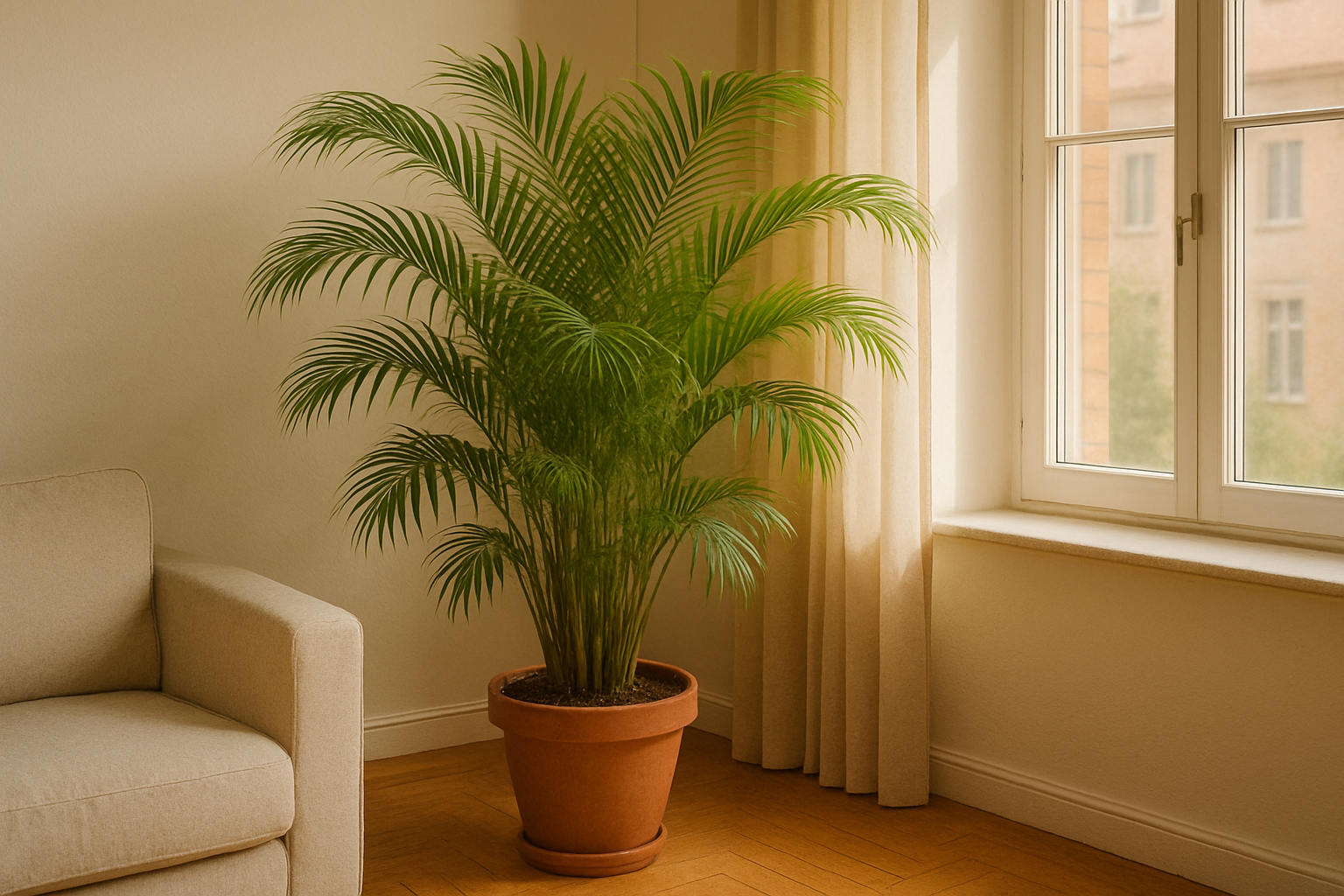The pinnacle of “Planterior” design—bringing the vitality of nature into your home—is undoubtedly the statement tree. A single, magnificent tree can have a more powerful design impact than any piece of furniture.
However, for cat parents, the dream of a large indoor plant often comes with a big worry: “What if my cat chews on the leaves and gets sick?”
You can now set those worries aside. Here is your guide to creating a beautiful living space where both humans and pets can thrive, featuring stunning large trees that are completely safe for your feline friends.
Part 1. 🐾 A Note for Cat Parents: Please Avoid These Popular Plants!
First, let’s identify the popular plants often seen in design magazines that are toxic to cats and must be avoided. No matter how beautiful they look in photos, you’ll have to take a hard pass on these.
- ❌ Monstera Deliciosa: While its split leaves are iconic, this plant contains insoluble calcium oxalates, which can cause oral irritation, vomiting, and difficulty swallowing.
- ❌ Rubber Plant (Ficus elastica): The milky sap of most Ficus varieties, including the Rubber Plant and Fiddle Leaf Fig, can cause skin irritation and gastrointestinal upset if ingested.
- ❌ Bird of Paradise (Strelitzia nicolai): Its dramatic, wide leaves are stunning, but its seeds and flowers contain mild toxins that can cause illness.
- ❌ Philodendron Species (Philodendron spp.): Nearly all types of Philodendron contain the same toxic calcium oxalate crystals as the Monstera.
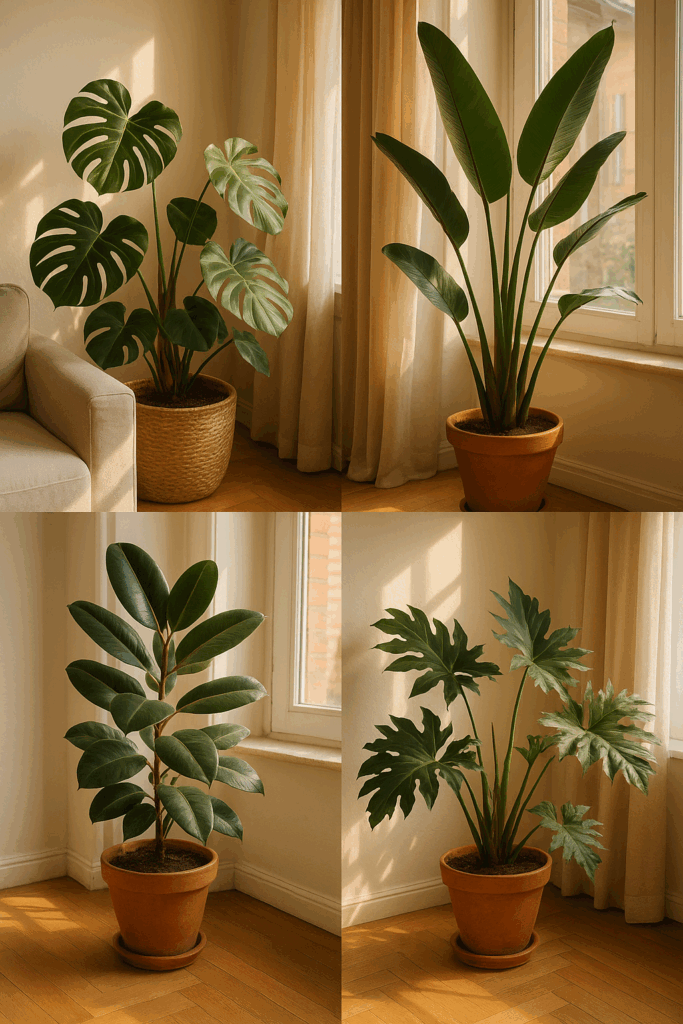
Part 2. ✨ Go Green with Your Cat! 4 Safe and Stylish Statement Trees
Now, let’s introduce the beautiful, large trees you can confidently welcome into your home as the main attraction.
1. Areca Palm (Dypsis lutescens)
“Lush, full foliage that instantly creates a tropical resort vibe.”
🌿 Why it’s great: Recognized by NASA for its excellent air-purifying qualities, the Areca Palm is a pro at removing indoor toxins. Its long, feathery fronds create a lush, exotic atmosphere. Best of all, it’s 100% non-toxic to cats, so you don’t have to worry if they bat at the leaves.
💧 How to Care for It:
- Light: Prefers bright, indirect light. Direct sunlight can scorch the leaves.
- Water: Water thoroughly when the top inch of soil is dry. It appreciates humidity, so misting the leaves occasionally will prevent brown tips.
🛋️ Interior Design Tip: Pair it with a rattan or terracotta pot for a natural, cozy aesthetic. For a more modern look, plant it in a simple white or black cylindrical planter.
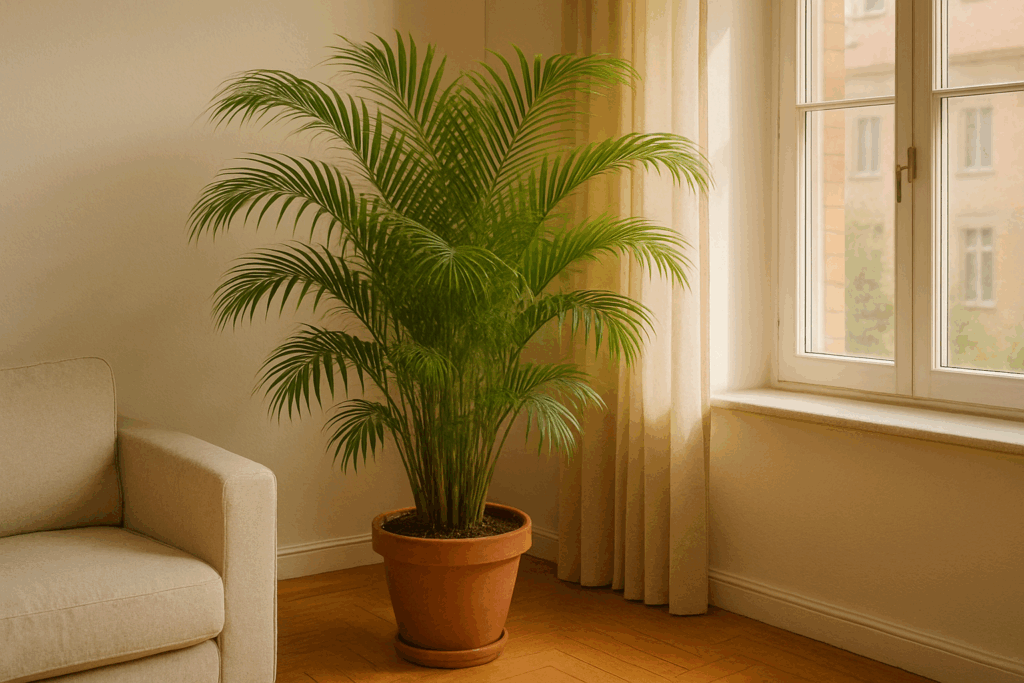
2. Kentia Palm (Howea forsteriana)
“Gracefully arching fronds for an elegant, hotel-lobby feel.”
🌿 Why it’s great: The Kentia Palm has wider, darker leaves than the Areca and a sophisticated, arching shape that exudes elegance. It’s resilient against pests and is more tolerant of lower light conditions, making it a great choice for beginners. And, of course, it’s perfectly safe for cats.
💧 How to Care for It:
- Light: Thrives in medium indirect light but can tolerate low-light conditions well.
- Water: Allow the soil to dry out halfway before watering again. Be careful not to overwater.
🛋️ Interior Design Tip: In a minimalist space, a single Kentia Palm can serve as a stunning living sculpture. Match it with a textured ceramic or sleek metallic pot to maximize its refined look.
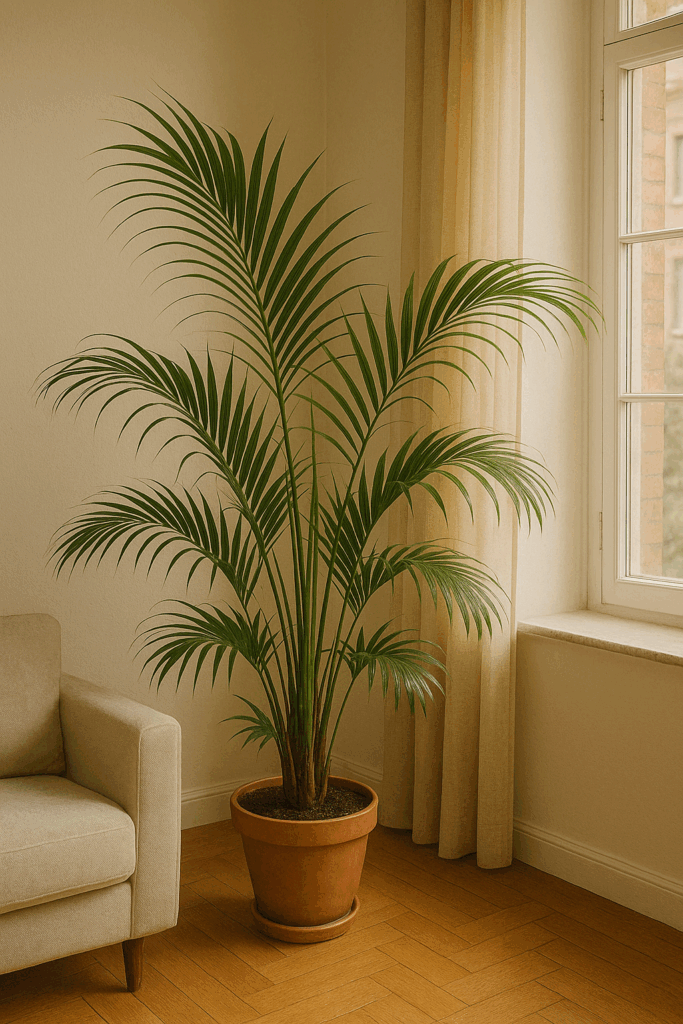
3. Money Tree (Pachira aquatica)
“A symbol of good fortune with a unique, artistic trunk.”
🌿 Why it’s great: Known for bringing good luck and prosperity, the Money Tree is loved for its distinctive braided trunk and vibrant, star-shaped leaves. It’s a hardy and easy-to-care-for plant that is completely non-toxic to cats.
💧 How to Care for It:
- Light: Prefers bright, indirect light but adapts well to shadier spots.
- Water: Water thoroughly only when the soil is completely dry. Its trunk stores water, making it very sensitive to overwatering.
🛋️ Interior Design Tip: Place it in a pot with legs or on a plant stand to show off its unique trunk. It pairs especially well with natural wood tones and bohemian or mid-century modern decor.
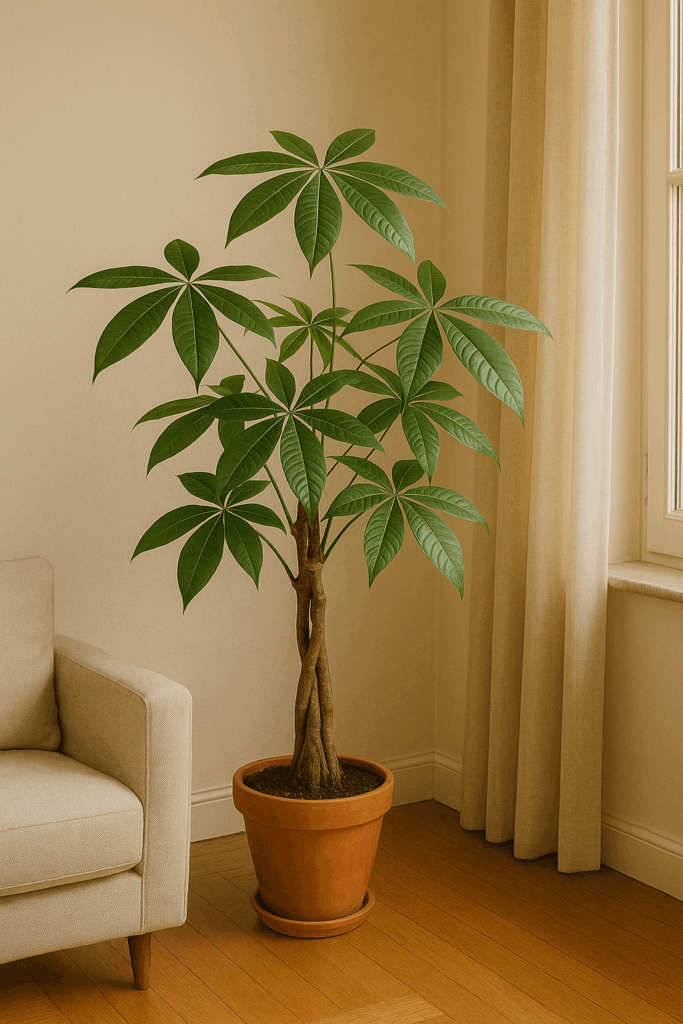
4. Banana Plant (Musa tropicana)
“A bold and unique choice for a true urban jungle.”
🌿 Why it’s great: With its enormous, soft leaves, the Banana Plant will instantly transform your space into a tropical paradise. It grows quickly, which is rewarding to watch, and is completely harmless to cats, even if they chew on or shred the tender leaves.
💧 How to Care for It:
- Light: This plant is a sun-worshipper. Place it in the brightest spot you have.
- Water: It’s a thirsty plant during its growing season. Water it as soon as the top layer of soil feels dry.
🛋️ Interior Design Tip: Pair it with bold, patterned rugs or cushions to create the atmosphere of an exotic resort. The large leaves can tear easily, so it’s best to place it slightly out of high-traffic cat pathways.
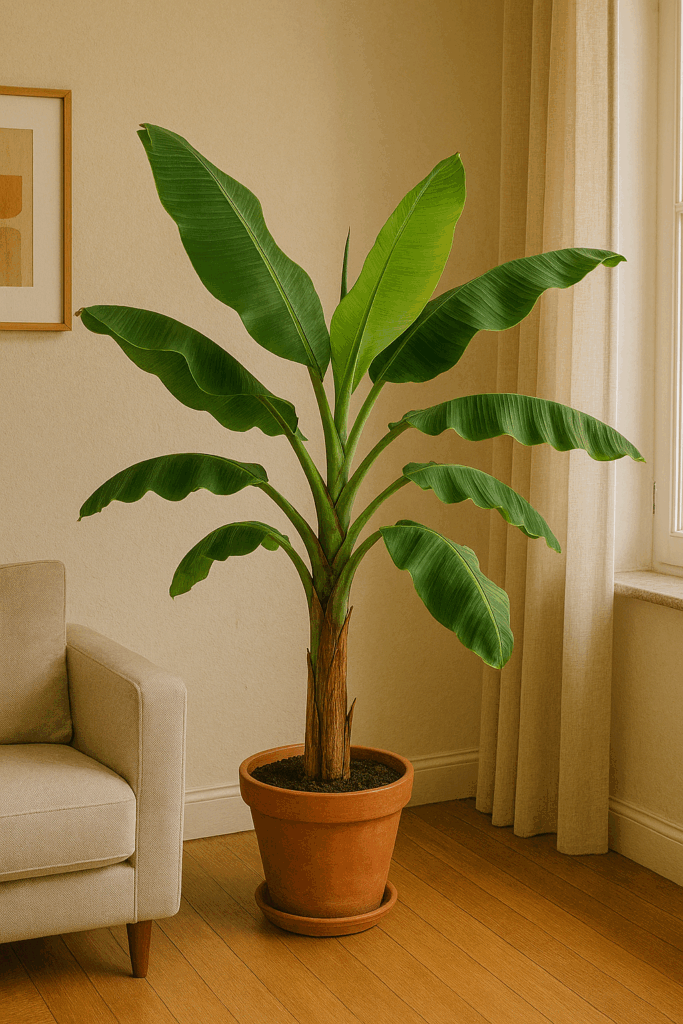
Part 3. 💡 Extra Tips for the Purr-fect “Cat-terior”
Even after choosing a safe plant, a few extra steps can ensure a harmonious life with your green and furry friends.
- Choose a Heavy, Stable Pot: To prevent your cat from knocking the tree over, select a substantial pot with a wide base made from a heavy material like ceramic or concrete.
- Cat-Proof the Soil: Many cats see a pot of soil as a spare litter box or a fun place to dig. To prevent this, cover the topsoil with large, decorative river stones or a specialized pot guard.
- Provide a “Yes” Plant: If your cat is a habitual leaf-chewer, offer them their very own pot of cat grass (oat grass). This can divert their attention away from your statement tree.
- Supervise the First Meeting: When you first bring a new tree home, monitor your cat’s interactions with it. While non-toxic, consuming too much of any plant can cause mild stomach upset. If they show excessive interest, a light spritz of water from a spray bottle can send a clear “hands-off” message.
Now you can finally bring that statement tree you’ve been dreaming of into your home. Enjoy creating a beautiful, safe, and green oasis for both you and your beloved cat!

